TOP FL TRAFFIC SCHOOL QUESTIONS
You got caught speeding or making an illegal left turn in Florida, now what do you do?
The easiest, and usually smartest thing to do when you receive any type of Florida traffic ticket, is to take traffic school. What does that mean? We researched our Florida customer service database and pulled the top questions students asked about this topic. To make the process a little bit easier for you, we gathered the answers to those more-than-frequently-asked questions and printed them here:
Q: What is traffic school?

A: Traffic school in Florida, also known as a Basic Driver Improvement (BDI) course is a driver-related educational course one takes in lieu of receiving points on their driving record from a non-criminal moving violation.
Q: How long is FL traffic school?

A: Per the FL HSMV, traffic school is designed to be 4 hours long.
A: If you take it in a classroom setting, then you will be in there for FOUR HOURS.
A: If you take OUR ONLINE COURSE, you are only required to spend a minimum of 3 hours and 15 minutes in the course. You can complete it at your own pace.
Q: How does FL traffic school work?

A: Although every traffic school presents the FL HSMV Approved material in their own, unique way – FL traffic school basically works like this:
1. Student signs up and registers for traffic school
2. Student takes and completes the course
3. The traffic school reports the completion to the FL HSMV
4. The student submits the proof of Completion Certificate to their traffic court the DMV
5. Student’s traffic ticket is dropped and the points are eliminated
6. Student does not have to do anything else, but is encouraged to follow-up with the traffic court website to confirm their ticket was, “Dismissed By Traffic School.”
Q: How do I sign up for traffic school?

A: First, look here: http://www.flhsmv.gov/ddl/BDIS_providers.html to find an approved traffic school. We are listed under Traffic School by the Improv Comedy Club.
You can sign up for traffic school online, by phone (800-660-8908), by mail or in person. Make sure you pay the bail or fine from the ticket as well as the traffic school process fee.
Q. How do I request traffic school?

A. If you are eligible to take traffic school, you will see an option box on your ticket. By clicking that option box and paying the traffic school administrative fee, you are requesting/agreeing to take traffic school to dismiss your ticket.
You can do this by mail, phone or the court website.
Q: Am I eligible to take FL traffic school?
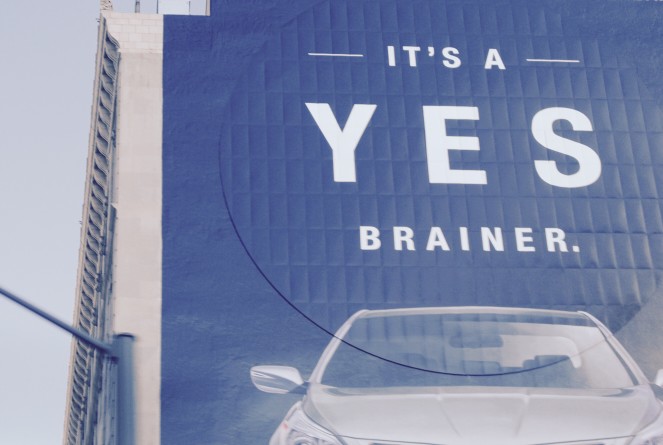
A: If your ticket and/or courtesy notice says that you are eligible to take traffic school AND you haven’t attended traffic school within 12 months AND have not taken it FIVE (5) TIMES within your lifetime (Florida’s Maximum amount of times you can take traffic school) – then you are eligible.
Q: Wait, how often can I take it?

A: You can take FL traffic school once every 12 months… but only 5 times maximum in your life.
Q: What do you do in traffic school?

A: FL traffic school is comprised of a combination of reading, listening and watching material about Florida traffic laws, defensive driving skills, car facts, traffic statistics and more. You will also take a final quiz at the end of the course.
Q: Can I fail the course?

A: Nope. This is a pass-only course. However, FL HSMV requires traffic schools to administer a 40 multiple-choice question final in which the student must get 32 out of 40 questions correct to pass. You are allowed unlimited attempts to pass.
Q: How do you take FL traffic school online?

A: You can take our MyImprov.com online course on any computer, phone or device that has internet access! It is mostly reading… therefore you will be scrolling down the screen for the most part and occasionally watch (optional-only) videos.
Q. Does traffic school erase the ticket and/or points
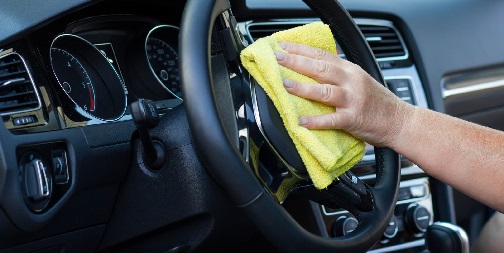
A. Beware of the words erased, disappeared, vanished and removed. Points and “The Ticket” are not “erased” from your FL HSMV record. Traffic school will prevent points from appearing on your public driving record, which prevents your insurance company, employer, or others inquiring into your driving background from seeing the violation.
Q: When is FL traffic school due?

A: FL traffic school due dates vary for each county. It ranges from 30-90 days from the date that the citation fine was paid. Check your courtesy notice to confirm!
Q: Do I have to pay for traffic school?

A: Yes. Yes, you do.
Q: But I already paid $7.00+ for traffic school when I paid my ticket!

A: That administrative fee was for the court, for the opportunity to take traffic school. You will pay the traffic school an additional amount.
Q: Ok, how much does it cost?

A: It depends on the traffic school, but did you know, you will get 4 FREE TICKETS to the IMPROV COMEDY CLUB upon completion of our traffic school 😉
How to Attend Traffic School – Then and Now
If you have traffic infractions and want to get them erased from the record, then traffic school could be a wise move. You can complete the course and get on with life.
Now, some people might tell you that taking these courses is a waste of time. Though perhaps well intentioned, they are wrong. These naysayers could be thinking about the old days of traffic school and defensive driving courses. Things are much different today.
Traffic School in the Past
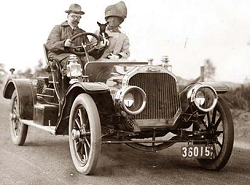
A long time ago, it was difficult to get through traffic school. Some students had to take time off from work to attend classes. They had to drive to the school, fighting rush hour traffic in cases. It was all a tremendous burden.
These types of inconveniences made many drivers avoid the desired ticket dismissal course and much needed training. People tended to sign up for traffic school only if they really had to; for example, a judge ordered it.
Times have changed for the better. Now, you can complete traffic school totally online. No need to physically attend classes. Best of all, you can schedule the classes at your own convenience, no working around the times set by the instructors, and you can take it in bed wearing your favorite pajamas!
Defensive Driving Courses

Another reason many believe traffic school is not worth the trouble is that they think it is all about defensive driving. Well, yes, you will learn this important concept. Every motorist needs to know how to drive in a manner to protect themselves and others on the road.
However, students want much more out of their programs, as they should. Most of all, they want point reductions on their licenses. That is why the best traffic schools are authorized by the state to ensure that course completion results in ticket dismissal.
Ticket Dismissal

Though regulations change, every state has some state-specific general rules about traffic school. You must complete the required amount hours. Also, the instructor/school must usually be certified by the state.
After meeting the requirements, you qualify for ticket dismissal. The state wants you to learn all about defensive driving. Yet, this knowledge alone does not motivate students to attend the classes. You can now benefit from ticket dismissal and license point reductions.
How Infractions Affect You
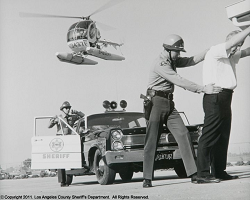
Traffic infractions have a negative effect on your driving privileges. First, you are in danger of getting your license suspended or revoked. Too many infractions can lead the authorities to take your license.
Second, remember that your insurance company keeps track of your tickets. They may raise or lower your policy rates based on this information. If you allow points to remain on your record, then expect to pay a higher rate.
If you attend traffic school, many states will dismiss the infractions, lowering your license points. Then, the insurance company will subsequently offer you a discounted auto policy in the near future.
The Traffic School of Today

As seen here, traffic school has become easier to attend and offers more benefits to students than ever before. Anyone can sign up for an online class and get those dreaded license points reduced. Sign up today and get on the way to a clean driving record. Moreover, do not forget about the lower auto insurance rates.
Many workplaces, organizations and families take group classes in CA, AZ and FL. Since they can take the classes online, it is no problem setting a time convenient for the entire group.
With so much going for it, one can see why many are choosing to attend the modern traffic school.
Don’t Let This Be You!
MIT: New algorithm may improve defensive driving
CAMBRIDGE, Mass. — In 2008, according to the National Highway Traffic Safety Administration, 2.3 million automobile crashes occurred at intersections across the United States, resulting in some 7,000 deaths. More than 700 of those fatalities were due to drivers running red lights. But, according to the Insurance Institute for Highway Safety, half of the people killed in such accidents are not the drivers who ran the light, but other drivers, passengers and pedestrians.
In order to reduce the number of accidents at intersections, researchers at MIT have devised an algorithm that predicts when an oncoming car is likely to run a red light.
Based on parameters such as the vehicle’s deceleration and its distance from a light, the group was able to determine which cars were potential “violators” — those likely to cross into an intersection after a light has turned red — and which were “compliant.”
The researchers tested the algorithm on data collected from an intersection in Virginia, finding that it accurately identified potential violators within a couple of seconds of reaching a red light — enough time, according to the researchers, for other drivers at an intersection to be able to react to the threat if alerted. Compared to other efforts to model driving behavior, the MIT algorithm generated fewer false alarms, an important advantage for systems providing guidance to human drivers. The researchers report their findings in a paper that will appear in the journal IEEE Transactions on Intelligent Transportation Systems.
Jonathan How, the Richard Cockburn Maclaurin Professor of Aeronautics and Astronautics at MIT, says “smart” cars of the future may use such algorithms to help drivers anticipate and avoid potential accidents.
“If you had some type of heads-up display for the driver, it might be something where the algorithms are analyzing and saying, ‘We’re concerned,'” says How, who is one of the paper’s authors. “Even though your light might be green, it may recommend you not go, because there are people behaving badly that you may not be aware of.”
How says that in order to implement such warning systems, vehicles would need to be able to “talk” with each other, wirelessly sending and receiving information such as a car’s speed and position data. Such vehicle-to-vehicle (V2V) communication, he says, can potentially improve safety and avoid traffic congestion. Today, the U.S. Department of Transportation (DOT) is exploring V2V technology, along with several major car manufacturers — including Ford Motor Company, which this year has been road-testing prototypes with advanced Wi-Fi and collision-avoidance systems.
“You might have a situation where you get a snowball effect where, much more rapidly than people envisioned, this [V2V] technology may be accepted,” How says.
In the meantime, researchers including How are developing algorithms to analyze vehicle data that would be broadcast via such V2V systems. Georges Aoude SM ’07, PhD ’11, a former student of How’s, designed an algorithm based on a technique that has been successfully applied in many artificial intelligence domains, but is relatively new to the transportation field. This algorithm is able to capture a vehicle’s motion in multiple dimensions using a highly accurate and efficient classifier that can be executed in less than five milliseconds.
Along with colleagues Vishnu Desaraju SM ’10 and Lauren Stephens, an MIT undergraduate, How and Aoude tested the algorithm using an extensive set of traffic data collected at a busy intersection in Christianburg, Va. The intersection was heavily monitored as part of a safety-prediction project sponsored by the DOT. The DOT outfitted the intersection with a number of instruments that tracked vehicle speed and location, as well as when lights turned red.
Aoude and colleagues applied their algorithm to data from more than 15,000 approaching vehicles at the intersection, and found that it was able to correctly identify red-light violators 85 percent of the time — an improvement of 15 to 20 percent over existing algorithms.
The researchers were able to predict, within a couple of seconds, whether a car would run a red light. The researchers actually found a “sweet spot” — one to two seconds in advance of a potential collision — when the algorithm has the highest accuracy and when a driver may still have enough time to react.
Compared to similar safety-prediction technologies, the group found that its algorithm generated fewer false positives. How says this may be due to the algorithm’s ability to analyze multiple parameters. He adds that other algorithms tend to be “skittish,” erring on the side of caution in flagging potential problems, which may itself be a problem when cars are outfitted with such technology.
“The challenge is, you don’t want to be overly pessimistic,” How says. “If you’re too pessimistic, you start reporting there’s a problem when there really isn’t, and then very rapidly, the human’s going to push a button that turns this thing off.”
The researchers are now investigating ways to design a closed-loop system — to give drivers a recommendation of what to do in response to a potential accident — and are also planning to adapt the existing algorithm to air traffic control, to predict the behavior of aircraft.
Different Insurance for Different Stages of Your Life
Your age impacts your insurance rate. A young driver is charged because they are a higher risk factor. Rates for older drivers take slower reflexes and declining vision/hearing into account. Your stage of life is a key to your insurance rate, but discounts are available for every stage of life. When you know all of the available discounts, you empower yourself to keep your auto insurance rate under control.
Young Drivers – Young drivers need discounts, but there are not many available. Is your student on the honor roll? Honor roll students qualify for discounts with many companies. Other companies offer safe driver programs for teens that may include completing a defensive driving course. Check with your agent to see what discounts are available in your state and with your auto insurance company.
Adult Drivers – A homeowner discount is one of the biggest discounts offered by auto insurance companies. With some companies, this discount only requires your own your home. With other companies, it is a discount given when you have auto and homeowner insurance with the same company. Ask your insurance agent if a security system reduces your auto policy premium. The best way for an adult driver to ensure low car insurance rates is to keep a clean driving record. First accident forgiveness and safe driver discounts are available when a driver has a clean record over a long period of time.
Senior Drivers – When you reach age 55, ask your agent about special discounts available for seniors. If there is a safety class discount available, call your local Department of Motor Vehicles for a list of approved defensive driving courses. When you successfully complete the safety class, (sometimes referred to as traffic school or a defensive driving school), give the certificate of class completion to your auto insurance agent. Your agent will enter the certificate information into the system and you will see the decrease on your next bill.
Mercedes for a price of Honda?
To work in traffic school you have to be a car junkie, we daily scan interesting news to share with our readers.
Mercedes plans to launch compact coupe and SUV in U.S.
STUTTGART — Mercedes-Benz will launch coupe and SUV versions of its new compact car family in the United States in the next three years and is considering a third variant – a convertible or a shooting brake – to help win younger customers to the brand.
Joachim Schmidt, Mercedes’ global sales and marketing boss, said in an interview with Automotive News Europe that the automaker is developing at least four models based on its new MFA, or Mercedes Front-wheel-drive Architecture.
“We will introduce the next generation of our MFA family to the U.S.,” Schmidt said. Two variants, maybe even a third, are planned for the U.S., he said.
The coupe will be launched in the U.S. in summer 2013, according to a company source.
Mercedes insiders call it a “baby CLS” because it will have similar styling to the brand’s larger CLS coupe-styled four-door model. An SUV aimed as a rival to the BMW X1 will follow in summer 2014. Both variants will go on sale in Europe three to five months ahead of their U.S. launch.
Mercedes will introduce compact cars in the U.S. because consumer preferences are changing toward smaller vehicles. The automaker also wants to stay apace with rivals BMW and Audi. The new compact car family will replace Mercedes’ current A- and B-class models, which are not sold in the U.S. In Europe, Mercedes will launch the next-generation B class hatchback at the end of this year, followed by the A class hatchback in late summer 2012.
Melrose Place Star Pleads Not Guilty to Manslaughter
The star from the original
Melrose Place continues to make headlines following her DUI car crash last June in New Jersey, which resulted in the death another motorist.
Amy Locane-Bovenizer is facing manslaughter charges.
The 39-year-old mother of two pleaded not guilty to aggravated manslaughter and assault by auto charges, reports say.
Somerset County prosecutors say Locane-Bovenizer’s SUV hit the vehicle of 60-year-old Fred Seeman as he was turning into his driveway, breaking 10 of his ribs and killing his wife.
Officers detected alcohol on Locane-Bovenizer’s breath and arrested her, but she was shortly freed after posting $50,000 bail.
We talked about this subject before, but it never ceases to amaze and anger us. We come across many people from different walks of life in our Traffic School.
Especially when we teach our classes in Hollywood we see many celebrities come through our doors… Yes, celebrities too get traffic tickets. We’re all human and we totally understand an occasional speeding ticket. But being a celebrity comes with certain responsibilities. And while reckless driving (especially under the influence) is non- excusable for anyone…it’s especially troubling to see another celebrity making headlines… For crying out loud… if you are going to have few cocktail – enjoy! – But get a Limo – you can afford it!
Insurance Reduction for New York Drivers
New York Drivers pay some of the highest insurance rates in the country. However they are also fortunate to live in a state which is one of the very few in the nation that mandates insurance companies to reduce drivers premium. There is a caveat: a driver must complete a NY DMV approved
Defensive Driving Course. The good news you don’t have to spend six hours in a class. Courses like ours, Improv Defensive Driving Course, are available online and can be taken at your pace. Below are a few common questions about the course:
Q. After completing the Defensive Driving Course (aka as PIRP – Point and Insurance Reduction Course), how do I receive the insurance reduction?
A. Upon completion Improv’s Defensive Driving course, we will issue you certificate of completion. If you present your certificate to your insurance company or agent within 90 days after course completion, your liability and collision premium reduction will begin immediately, retroactive to the date you completed the course. If you present your certificate more than 90 days after course completion, the insurer may issue the premium discount effective from the date presented.
Q. Will the PIRP course prevent my insurance company from raising my premiums?
A. No. Insurance reduction does not prevent general premium increases, or premium increases due to violations or accidents. However It provides a 10% reduction for three years, from the base rate of your current liability, no-fault and collision premiums.
Q. What if more than one person named on a policy completes the PIRP course?
A. The insurance premium reduction applies to all motor vehicles principally operated by the motorist who completes the course. The reduction can be applied to only one driver for each covered vehicle.
Q. If I complete a DMV approved motorcycle safety/accident prevention course, does the insurance reduction benefit extend to my automobile coverage?
A. Yes. The reduction applies to the liability and collision insurance premiums for both your motorcycle and automobile.
Q. Will young operators (under 18) and drivers participating in assigned risk pool receive the insurance premium discount?
A. Yes. Any insured driver who is the principal operator and completes a Point & Insurance Reduction Program course will receive the reduction.
Q. If a youthful operator is already receiving a driver education reduction, will the PIRP discount also be applied?
A. Check with your insurance company or agent to find out if both reductions will be given at the same time
New Car Buying Tips: Dealer Add-Ons
New Car Buying Tips
Dealer add-ons – a value service or a rip-off?
As a traffic school experiment we recently ventured onto the dealer lot to purchase a Ford Fusion Hybrid, we noticed a small sheet of paper listing additional costs, posted next to the window sticker.
This innocent sheet of paper contained two seemingly “valuable” add-ons, adding $600 to the sticker price of the vehicle. In the industry, this list of add-ons is called the “supplemental sticker ” We call it the “rip-off sticker”, you judge for yourself.
After-Market Add-Ons
This deceiving practice allows dealers to advertise a very low price for a vehicle (sometimes below a sticker). Then use a supplemental sticker to add high-profit items that hold little or no value to the consumer. In our experiment case, the sticker added two products: an interior “protection” package, and an “Express Code Marking System.”
The interior protection package is a chemical sprayed on the vehicle’s upholstery protect it from stains. Grand-Total: $195. At first glance, seems like a bargain, who would want stains on their brand new upholstery? But being scholars of a Defensive Driving School, we believe in research and facts. A quick search online found a bottle of 3M Scotchgard Auto Interior Fabric Protector for about $9 on 3M’s website. This product promises the same advantages as the stuff sprayed onto your upholstery at the dealership, but costs $186 less.
The second product was the Express Code Marking System. This marking system consisted of a special label placed on key body parts of the vehicle that if removed, would leave the imprint of an ultraviolet identification number. It wouldn’t notify the police, ruin the part or make any sort of noise. The dealer was charging $400 for this product. Now do you really think that someone who is about to steal your car will pause and look if your car is code marked? Chances are, if someone wants to take your car and chop it for parts they will… the fact that they won’t be able to re-sell parts won’t give you much comfort. Certainly not $400 worth of comfort. In our humble opinion, if anyone should pay for this service, it should be your insurance company. Your money would be much better spent taking an insurance discount course and saving additional $$$ on your auto premium. Many states mandate insurance carriers to offer you an additional discount for taking a defensive driving course.
My Used Car’s a Lemon! Am I Stuck With It?
Working in traffic school we often hear nightmare stories from students who bought a used car that turned out to be a
lemon. So we decided to take a little detour from our defensive driving courses and do some legal research. Lemon laws protect new car buyers in every state in the nation, but it’s far more common for used car buyers to get stuck with an unreliable vehicle, or to incur repair bills that cost more than the car. For such unfortunate consumers, it often goes downhill from there.
Owners of lemons, as these cars are often called, must still make car payments while their vehicle sits idle. One-sided arbitration clauses — built into practically every dealer’s vehicle sales contract — work to keep many used car buyers from taking a case to court. Finally, a buyer may have to prove that the vehicle’s problems existed prior to the sale in order to get some compensation. These factors plus the subject’s complexity leave many American consumers in the lurch.
“Many of these cars are dangerous to drive,” according to John Van Alst, used car fraud expert with the National Consumer Law Center. “Even if not, when a car becomes inoperable, it becomes a liability instead of an asset.”
Although it’s not always the case, some of these used lemons are sold fraudulently, such as when a dealer fails to disclose the vehicle’s history, misrepresents the vehicle title or tampers with the odometer. Often, these dealers prey on the most vulnerable, low-income segment of the population.
A New Twist: Used Car Lemon Laws
The frequency and severity of consumers’ used car problems has led some state legislatures to pass new laws. Currently, though, only six states, Connecticut, Massachusetts, New Jersey, New Mexico and New York have lemon laws on the books. The laws provide a statutory used car warranty, often based upon the age or mileage of the vehicle. If the vehicle exhibits problems during the warranty period, the dealer is given a chance to repair them. If those fixes don’t work after several tries, the dealer usually must either replace the car or refund the buyer’s money.
At least seven states have some other form of used car buyers’ rights, requiring used car warranties or setting minimum standards for the sale of used cars: They are Arizona, Connecticut, Illinois, Maine, Nevada, New Mexico and Pennsylvania. Still other states, including North Carolina, have an Unfair and Deceptive Practices statute that can be invoked. But only those states with true used car lemon laws require the dealer to provide a replacement or refund for your car.
The Sorry State of Used Car Regulations
Van Alst feels that most states aren’t very effective at protecting used car buyers from the myriad ways they can be swindled. “Most existing used car lemon laws are so limited in scope — the number of days the car is covered and the allowable mileage — that the consumer may not experience the problem or won’t have a chance to act on the problem in that time period,” he said.
For example, Arizona law covers a used car only if a major component breaks within 15 days or 500 miles of its purchase — whichever comes first. For new cars, though, those terms extend to two years or 24,000 miles.
By contrast, many European consumers have stronger protections. In France, for example, a car buyer may cancel the transaction up to seven days after the sale. And a 1999 European Union directive allows consumers to seek redress for any problem that makes a vehicle unfit to drive for a full two years after the purchase.
As is always the case when buying a car, the only way to fully protect yourself is to come armed with information, most easily obtained on the Internet. Many consumer advocacy sites (such as The Center for AutoSafety) discuss new car lemon laws in detail, but obtaining information on used car laws is trickier. We found Car Lemon (an attorney referral site) and Autopedia to have the broadest information on states’ used vehicles lemon laws.
Is Geography Destiny?
What about U.S. consumers who don’t live in a state with a used car lemon law, or whose state law doesn’t cover their individual situation? In those cases, there are federal laws that may help:
- Uniform Commercial Code (UCC) — Under the UCC, a used car sale automatically includes an implied warranty that the car is fit for transportation. However, used car dealers may “disclaim” (deny) the implied warranty if they sell the vehicle “as is” — which they typically do. In the few states that prohibit dealers from disclaiming the implied warranty (such as the District of Columbia, Maryland, Massachusetts and West Virginia), the UCC can be more effective than a used car lemon law would be.
- FTC Used Car Rule — The Federal Trade Commission requires dealers who sell six or more cars per year to post a in every used car that’s offered for sale. The guide must show whether the vehicle is being sold “as is” or with a used car warranty, what percentage (if any) of repair costs is covered by the dealer under the warranty, and a list of the major defects that can occur on used vehicles.
- Magnuson-Moss Warranty Act (a.k.a. Federal Lemon Law) — This law prohibits the disclaimer of implied warranties when a car is sold with an express written warranty. It also provides for the awarding of attorney fees in particular cases.
How To Prepare for Battle
In order to determine if you truly have a lemon and to build a solid argument, make sure you’ve taken the following steps.
First, run vehicle history reports from Carfax and Autocheck. These reports expose many of the hidden problems associated with used cars, such as prior accidents and branded titles. Edmunds recommends buyers run both reports if possible, because they can sometimes uncover different information. An important fact to consider: U.S. states do not require insurance companies to report when they fix a vehicle, although Canada does.
Do not rely on reports alone. Take the car to a qualified mechanic and to a body shop that can spot signs of structural damage. Make sure they put it up on a lift. As with vehicle history reports, this is best done before the vehicle purchase, but it’s still critical to determine the source of the vehicle’s problem after you own it.
Document the vehicle’s service history and retain all work orders and receipts. Download or print a vehicle repair log from Fraud Guides or Microsoft.

If the dealer still won’t provide satisfaction, or if you suspect fraud, send a complaint to the vehicle’s manufacturer (in writing) and the state attorney general’s office or department of consumer protection. The federal government’s Consumer Action Web site provides detailed information on how and where to file complaints (including sample letters), dispute resolution services, small claims court and more.
Calling Out the Big Guns
You don’t necessarily have to engage a lawyer to fight for your rights; sometimes, a quick trip to small claims court will do the trick. But a good lemon law attorney can determine whether you’ve got a serious case (especially when safety is an issue) and can shepherd you through the legal process. Many lemon lawyers don’t charge client fees, hoping to collect instead from the defendant.
You can find lemon law specialists in your state through the National Association of Consumer Advocates. Free legal aid to low-income individuals is available through the non-profit Legal Services Corporation and National Legal Aid and Defender Association.
Pricey used cars test conventional wisdom
We are always trying to save you money here at our
online traffic school. The conventional wisdom that buying used cars is always the most frugal option may be tested by rising prices in the U.S. aut
o resale market.
Edmunds.com estimates the average price paid for a used, three-year old auto has risen $1,471 — or 8.5 percent — since last year, reaching $18,832.
The price you’ll pay for used SUVs like this Chevy Tahoe may have risen substantially. What’s behind the rise? Edmunds analysts believe it’s a combination of bargain-hunting consumers and the rise of certified pre-owned car sales at dealerships:
“Used cars are in great demand and relatively short supply, so their prices are remarkably high,” stated Edmunds.com Analyst Joe Spina. “Automakers understand that many traditional new car buyers are considering used cars, and in response are emphasizing their certified pre-owned car sales programs through which they can earn revenue on used car sales. This effort will keep used car prices high since CPO cars sell for a higher price than comparable noncertified used cars, raising the ceiling for the entire used car market.”
Indeed, Edmunds.com estimates the percentage of used cars sold as CPO rose from 13.8 percent to 18.5 percent.
This data is interesting, but it doesn’t look like every used car buyer is likely to encounter sharply higher used-car prices than they did last year. And when they do, I’m not sure it will be because of CPO and frugal consumers.
After all, a lot of the biggest price hikes seem to be focused in trucks and SUVs, and I’d be willing to bet that has more to do with gas prices than anything else.
After all, the resale values for trucks and SUVs, which generally get poor gas mileage fell sharply in response to the gasoline price spikes of 2008.
Due to the depressed global economy and the resulting lack of demand, gas prices have been fairly stable since then. People, as they are wont to do, have forgotten how painful those big gas bills were back in 2008, so they’re more willing to buy SUVs and trucks than they were when gas prices were high.
The other big movers were American brands, which I would wager have benefitted from improved brand perception as American car buyers have taken notice of their reliability and design upgrades.
On the other hand, if your preferred car is a Japanese sedan or station wagon, you might be in luck. The Edmunds.com value estimates have the Honda Accord and the Subaru Outback coming in at a lower than last year.
We had a lot of spirited discussion in the comment section a few months ago about whether buying a new car could be financially smart if it was close to or less than the price of a used model thanks to a generous rebate or other dealer incentive.
I think in the majority of cases, buying a low-mileage used car is probably the better decision. That said, rising used car prices and higher rates on used car loans are going to change the equation a little bit on some vehicles, and refusing to acknowledge that could leave you missing out on getting a new car for the price of a used one.
So what do you think? Is it time for the frugal to consider new cars? Why do you think used cars are getting pricier? leave your comments here on our defensive driving course blog!
50 Celebrities and Their Cars
- 1. Jennifer Lopez and Marc Anthony drive an Aston Martin DB7 & Lotus Elise
- 2. Ryan Gosling – Drives a black Toyota Prius.
- 3. Pierce Brosnan – Owns an Aston Martin Vanquish.
- 4. Verne Troyer – Drives a custom Mercedes CLK.
- 5. Janet Jackson – Drives an Aston Martin Vanquish.
- 6. Simon Cowell drives a million dollar Bugatti Veyron.
- 7. 50 Cent – Drives a Rolls Royce Phantom.
- 8. Charlize Theron – Tools around town in a Range Rover.

- 9. Brad Pitt and Angelina Jolie drive a BMW Hydrogen 7.
- 10. Jessica Simpson – Drives a white Escalade.
- 11. Julia Roberts – Drives a Toyota Prius.
- 12. Kevin Costner drives an Audi Q7 and Audi S8.
- 13. Matthew McConaughey drives a Lincoln MKX
- 14. Amy Winehouse drives a BMW 7 Series.
- 15. Kristen Cavallari – Drives a BMW 3 Series Coupe.
- 16. America Ferrera – Drives a Toyota Prius.
- 17. Nicole Richie and Joel Madden have a Bentley Continental.
- 18. Xzibit Drives a Lamborghini Gallardo.

- 19. Jerry Seinfeld owns a whole bunch of Porches.
- 20. JaRule – Drives a lime green Lamborghini Murcielago and Maserati Spyder.
- 21. Samuel Jackson drives a Maybach 57 S
- 22. Leonardo DiCaprio – Owns a Toyota Prius.
- 23. Mary Kate Olsen drives a Porsche Cayenne.
- 24. Paris Hilton – Owns a Mercedes Benz SLR
- 25. Colin Farrell – Drives a black Ford Bronco.
- 26. Kirsten Dunst – Drives a trendy Toyota Prius.

- 27. Justin Timberlake – Drives a white Jeep Wrangler Unlimited.
- 28. Kate Moss – Drives around London in her vintage MG.
- 29. Ice-T– Drives a red Bentley convertible.
- 30. Ryan Seacrest – Drives around in an Aston Martin.
- 31. Shaquille O’Neal – Owns an H2 and Rolls Royce Phantom among others.
- 32. Missy Elliott – Drives several cars including an Aston Martin V12 Vanquish, Rolls Royce Phantom and Lamborghini Gallardo.
- 33. Jeremy Piven – Drives a Ford Bronco.

- 34. David Beckham – Drives a Cadillac Escalade.
- 35. Jim Carey – Drives a Mercedes S-Class.
- 36. Wyclef Jean – Drives a $350,000 Pagani Zonda C12-S, a Ferrari 360 Spyder, an F1 McLaren and a Mercedes G-500.
- 37. Josh Duhamel – Drives a Chrysler 300C SRT-8.
- 38. Seal drives a Ferrari.
- 39. Fergie – Owns an H2.

- 40. Madonna – Drives a Maybach 57.
- 41. Tom Cruise – Drives a Porsche 911.
- 42. Benji Madden – Owns a 1950 Ford Shoebox.
- 43. Tyra Banks – Drives a Lexus SC.
- 44. Kate Walsh – Drives a Range Rover Sport.
- 45. Britney Spears – Drives a Mercedes SLR McLaren and a CLK.
- 46. Pete Wentz – Drives a Range Rover.
- 47. Matthew Perry – Drives a Porsche convertible.
- 48. George Clooney – Drive the two seater electric Tango 600.
- 49. Kim Kardashian – Drives a Black Bentley Continental GTC.
- 50. Sienna Miller – Drives an Audi TT
Bonus List: Homage to Jay Leno
Jay Leno is perhaps the most thoroughly car-loving celebrity there’s ever been. Below we’ve included a collection of just some of his greatest vehicles:

Jay Leno’s Ariel Atom

Jay Leno’s Bentley Speed Six

Jay Leno’s Jaguar XK120M
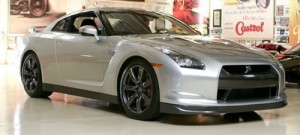
Leno’s 2009 Nissan GTR (This is #1 on our 2008 most lustable list.)

Jay Leno’s Stutz Bearcat

Jay Leno’s Tesla Roadster
At Improv Comedy Traffic School we see people from all walks of life… but even celebrities and their cars not immune to an occasional online traffic school sentence. We all can benefit from a little defensive driving refresher, especially if you are a driving 600 hp monster
Top Ten Cheapest New Cars
When you consider total cost of ownership like special financing programs, repairs, fuel efficiency, wear and tear…, purchasing a new car can make more sense than buying used. If you’re looking for practical and affordable, we got good news for you: you can still buy a good new car under $15,000. If you have a good credit and put some money down, you can be rolling in low budget style for less than the cost of breakfast and lunch out every day.
We included some choices on the list that include sedans, hatchbacks and coups. The prices are the sticker price for the cheapest version of the model, so you may be prepared to drive a stick shift and may forgo some luxuries like air conditioning.
Ranked in order of cheapest (don’t confuse with Best Value) to most expensive, the winners are:
1. 2010 Hyundai Accent Blue Coupe, $10,690.00
2. 2010 Nissan Versa 1.6 Base Sedan, $10,730.00
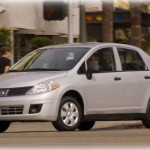
3. 2010 Kia Rio Base Sedan, $12,390.00

4. 2010 Chevy Aveo LS Sedan, $12,685.00
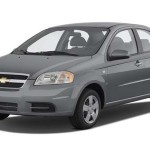
5. 2010 Chevy Aveo5 LS Hatchback, $12,835

6. 2010 Toyota Yaris 3 Door Hatchback, $13,365.00

7. 2010 Toyota Yaris 5 Door Hatchback, $13,665.00
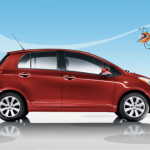
8. 2010 Kia Soul Base, $13,995.00

10. 2010 Suzuki SX-4 Base Sedan, $14,094.00

The Suzuki SX-4 is one of the better looking cars on the list that also commands great reviews. But no air conditioning would be a deal breaker for us (considering our Defensive Driving Course Headquarters are in Los Angeles… where it hit 115F this summer).
Operating a traffic school, gives us an access to many experts and individuals with automotive expertise. A quick research has confirmed that if we were handing out the award for best value on the list, it would go the new Ford Fiesta S (which is the only 2011 model on the list). Ford packed a lot of extra goodies into the Fiesta, including power mirrors, capless gas filler, aux in / USB jacks and A/C, yet has managed to keep the price reasonable for the entry level model. Surprisingly it also offers a sportiest ride on the list. If you enjoy getting your freak on with a twisty road, this is where you should begin shopping.
Word of caution: it isn’t easy to find base models on dealer lots, since they take up as much room as loaded models, have less margin and can be hard to move. If you have to special order one, expect to pay full sticker price instead of haggling over invoice plus $500. On the other hand, sometimes a dealer can be very motivated to sell a year old entry level car, even if it’s in a higher trim level. It may take some time (and travel) to find exactly what you’re looking for, but we always thought that the hunt is half the fun.
Google Cars Drive Themselves, in Traffic
MOUNTAIN VIEW, Calif. — Anyone driving the twists of Highway 1 between San Francisco and Los Angeles recently may have glimpsed a Toyota Prius with a curious funnel-like cylinder on the roof. Harder to notice was that the person at the wheel was not actually driving.
The car is a project of Google, which has been working in secret but in plain view on vehicles that can drive themselves, using artificial-intelligence software that can sense anything near the car and mimic the decisions made by a human driver.
With someone behind the wheel to take control if something goes awry and a technician in the passenger seat to monitor the navigation system, seven test cars have driven 1,000 miles without human intervention and more than 140,000 miles with only occasional human control. One even drove itself down Lombard Street in San Francisco, one of the steepest and curviest streets in the nation. The only accident, engineers said, was when one Google car was rear-ended while stopped at a traffic light. I wonder who took the blame there? I wonder if the driver could argue with a judge that they did not have to take an online traffic school but the car computer should.
Autonomous cars are years from mass production, but technologists who have long dreamed of them believe that they can transform society as profoundly as the Internet has.
Robot drivers react faster than humans, have 360-degree perception and do not get distracted, sleepy or intoxicated, the engineers argue. They speak in terms of lives saved and injuries avoided — more than 37,000 people died in car accidents in the United States in 2008. The engineers say the technology could double the capacity of roads by allowing cars to drive more safely while closer together. Because the robot cars would eventually be less likely to crash, they could be built lighter, reducing fuel consumption. But of course, to be truly safer, the cars must be far more reliable than, say, today’s personal computers, which crash on occasion and are frequently infected.
The Google research program using artificial intelligence to revolutionize the automobile is proof that the company’s ambitions reach beyond the search engine business. The program is also a departure from the mainstream of innovation in Silicon Valley, which has veered toward social networks and Hollywood-style digital media.
During a half-hour drive beginning on Google’s campus 35 miles south of San Francisco last Wednesday, a Prius equipped with a variety of sensors and following a route programmed into the GPS navigation system nimbly accelerated in the entrance lane and merged into fast-moving traffic on Highway 101, the freeway through Silicon Valley.
It drove at the speed limit, which it knew because the limit for every road is included in its database, and left the freeway several exits later. The device atop the car produced a detailed map of the environment.
The car then drove in city traffic through Mountain View, stopping for lights and stop signs, as well as making announcements like “approaching a crosswalk” (to warn the human at the wheel) or “turn ahead” in a pleasant female voice. This same pleasant voice would, engineers said, alert the driver if a master control system detected anything amiss with the various sensors.
The car can be programmed for different driving personalities — from cautious, in which it is more likely to yield to another car, to aggressive, where it is more likely to go first.
Christopher Urmson, a Carnegie Mellon University robotics scientist, was behind the wheel but not using it. To gain control of the car he has to do one of three things: hit a red button near his right hand, touch the brake or turn the steering wheel. He did so twice, once when a bicyclist ran a red light and again when a car in front stopped and began to back into a parking space. But the car seemed likely to have prevented an accident itself.
When he returned to automated “cruise” mode, the car gave a little “whir” meant to evoke going into warp drive on “Star Trek,” and Dr. Urmson was able to rest his hands by his sides or gesticulate when talking to a passenger in the back seat. He said the cars did attract attention, but people seem to think they are just the next generation of the Street View cars that Google uses to take photographs and collect data for its maps.
The project is the brainchild of Sebastian Thrun, the 43-year-old director of the Stanford Artificial Intelligence Laboratory, a Google engineer and the co-inventor of the Street View mapping service.
In 2005, he led a team of Stanford students and faculty members in designing the Stanley robot car, winning the second Grand Challenge of the Defense Advanced Research Projects Agency, a $2 million Pentagon prize for driving autonomously over 132 miles in the desert.
Besides the team of 15 engineers working on the current project, Google hired more than a dozen people, each with a spotless driving record, to sit in the driver’s seat, paying $15 an hour or more. Google is using six Priuses and an Audi TT in the project.
The Google researchers said the company did not yet have a clear plan to create a business from the experiments. Dr. Thrun is known as a passionate promoter of the potential to use robotic vehicles to make highways safer and lower the nation’s energy costs. It is a commitment shared by Larry Page, Google’s co-founder, according to several people familiar with the project.
The self-driving car initiative is an example of Google’s willingness to gamble on technology that may not pay off for years, Dr. Thrun said. Even the most optimistic predictions put the deployment of the technology more than eight years away.
One way Google might be able to profit is to provide information and navigation services for makers of autonomous vehicles. Or, it might sell or give away the navigation technology itself, much as it offers its Android smart phone system to cellphone companies.
But the advent of autonomous vehicles poses thorny legal issues, the Google researchers acknowledged. Under current law, a human must be in control of a car at all times, but what does that mean if the human is not really paying attention as the car crosses through, say, a school zone, figuring that the robot is driving more safely than he would?
And in the event of an accident, who would be liable — the person behind the wheel or the maker of the software?
“The technology is ahead of the law in many areas,” said Bernard Lu, senior staff counsel for the California Department of Motor Vehicles. “If you look at the vehicle code, there are dozens of laws pertaining to the driver of a vehicle, and they all presume to have a human being operating the vehicle.”
The Google researchers said they had carefully examined California’s motor vehicle regulations and determined that because a human driver can override any error, the experimental cars are legal. Mr. Lu agreed.
Scientists and engineers have been designing autonomous vehicles since the mid-1960s, but crucial innovation happened in 2004 when the Pentagon’s research arm began its Grand Challenge.
The first contest ended in failure, but in 2005, Dr. Thrun’s Stanford team built the car that won a race with a rival vehicle built by a team from Carnegie Mellon University. Less than two years later, another event proved that autonomous vehicles could drive safely in urban settings.
Advances have been so encouraging that Dr. Thrun sounds like an evangelist when he speaks of robot cars. There is their potential to reduce fuel consumption by eliminating heavy-footed stop-and-go drivers and, given the reduced possibility of accidents, to ultimately build more lightweight vehicles.
There is even the farther-off prospect of cars that do not need anyone behind the wheel. That would allow the cars to be summoned electronically, so that people could share them. Fewer cars would then be needed, reducing the need for parking spaces, which consume valuable land.
And, of course, the cars could save humans from themselves. “Can we text twice as much while driving, without the guilt?” Dr. Thrun said in a recent talk. “Yes, we can, if only cars will drive themselves.”
I wonder if in the future your car will have to go to traffic school?
Texting-and-driving bill dies
Senate deadlocks on measure to ban sending messages from road. Arizonans will not be banned from texting while driving, at least this year.
Proposed legislation that would have prohibited typing, reading or sending text messages and e-mails while driving on a state highway died with an 11-11 vote by the Senate on Tuesday. The bill would not have prohibited talking on the phone while driving and would have allowed drivers to type a name or telephone number to make a call.
This is the second year in a row the effort to ban texting while driving has failed despite support from dozens of organizations, including cellphone-company representatives. The Arizona Citizens Defense League opposed the measure.
Legislators who voted against it acknowledged that texting while driving is dangerous, but said they opposed unnecessary government restrictions.
Sen. Ron Gould, R-Lake Havasu City, called the legislation a “nanny bill” and “feel-good legislation” that would have banned a practice already covered under current laws against reckless driving.
Supporters said the bill is about saving lives. They said parents would be able to tell children that texting while driving is illegal.
“It’s such a dangerous activity to be texting while you’re driving, that outlawing it would seem to be a given,” said Sen. Barbara Leff, R-Paradise Valley.
Phoenix banned texting while driving within its city limits in 2007. Phoenix police Officer Luis Samudio said that about nine citations for texting while driving have been issued since the law went into effect.
“It is minimal,” he said.
Read more here
If you have recently taken some type of traffic school you know its very dangerous to text or talk while driving. Its been proven over and over. So please practice safe driving.
Pursuing good health is a laughing matter
He may not actually be funny himself, but for the past two decades, Dr. Steven Sultanoff has been an evangelist for therapeutic humor. The clinical psychologist, who leans more toward clever than hilarious, teaches the value of jokes, and the belly shaking that comes with them, to medical professionals and therapists at Pepperdine University and at workshops statewide.
Over the years, Sultanoff has come up with his own model for helping people through applied wit and whimsy. He calls it Humor Matters. But it’s far more than fun and games—his approach to levity has a purpose. “It’s not like you sit down and I tell you jokes. You talk about something, then maybe I exaggerate something, and you laugh at it. And the reason I might have exaggerated it was to help you shift your thinking about whatever it was,” he says.
Sultanoff had the aha moment that would shape his career during a training session for cognitive therapy. He realized everything he was trying to accomplish—managing our thoughts, behavior, feelings and even biochemistry—could be effected with humor. He developed a three-component model: laughter, mirth and wit.
“When you laugh,” Sultanoff says, “it affects you physiologically; when you experience mirth, it affects you emotionally; and when you exercise your wit, it affects you cognitively.” He has been known to don a clown nose to change the mood during a session, and he often instructs his clients who suffer from phobias to visualize a time when they laughed so hard it literally brought tears to their eyes.
Sultanoff sees proof daily that the emotional shifts stimulated by this are a beneficial physical aid. “You feel less stressed, and it seems to increase the tolerance to pain.”
Recently, there has been much media fanfare over a growing community that believes in pairing a hearty guffaw with breathing exercises—known as laughter yoga.
Dr. Madan Kataria, a medical doctor from Mumbai, founded Laughter Yoga Clubs back in 1995. He and Sultanoff have appeared together on panels, and though their approach is different, their goal is shared. “In laughter yoga, anyone can laugh without comedy,” Kataria says. “You start by fake laughing, and then once you lose inhibitions, it becomes real—and contagious.”
It should come as no surprise that California is home to the most laughter clubs in the nation. “The last time I was in Los Angeles, I suggested they start calling it Laugh Angeles,” Kataria says, punctuating his sentence with booming ha-ha’s. Celebrities Goldie Hawn and Oprah have endorsed the shift to laughter therapies. Former ballerina and Playboy model Cynthia Toussaint is a believer as well. She founded For Grace, a nonprofit for women in pain, and selected Sultanoff to speak at the group’s third conference, Gender Matters. After decades of enduring complex regional pain syndrome—sometimes known as the suicide disease because of the constant pain—she says developing a more jestful nature has helped her weather years of suffering.
“There are many options for pain, and we need all of them,” Toussaint says. “Plus, you get to have fun.”
Medical practitioners agree humor is a welcome distraction and valuable therapeutic tool, though even Sultanoff acknowledges additional research is needed to determine if fits of giggles can ever be considered an actual cure.
Laughter being the best medicine will have to remain a cliché—for at least a little while longer.
As a side note. The Improv Traffic School offers thier online traffic school in a fun and simple way. We all know traffic school can be a bore but they make it fun and funny!






































 Live Chat
Live Chat



